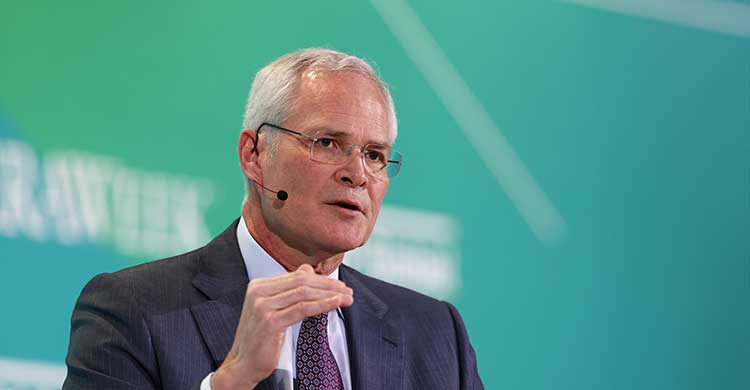Green hydrogen is too expensive to replace fossil fuels, the chief executives of oil supermajors ExxonMobil and Saudi Aramco told a conference in Houston, Texas. Exxon CEO Darren Woods went so far as to suggest that the US would not meet its net-zero emissions target for 2050, partly due to the high cost of renewable H2, he said during an appearance at energy conference CERAWeek. “One of the challenges here is while society wants to see emissions reduced, nobody wants to pay for it,” Woods said. “There’s a hesitancy for people to sign up for low-carbon hydrogen.”
Aramco CEO Amin Nasser told delegates that, in energy terms, the cost of green H2 amounted to the equivalent of $400 per barrel of oil — roughly five times the current price. He added that renewable hydrogen would only be affordable with a “significant amount of (government) incentives and offtake agreements of at least 15 years” — but that companies are wary of starting businesses that are only profitable with subsidies and would then be unable to make money if those were taken away.
Nasser also said during a panel interview that the energy transition is “visibly failing”. “A transition strategy reset is urgently needed and my proposal is this: We should abandon the fantasy of phasing out oil and gas and instead invest in them adequately reflecting realistic demand assumptions,” he said, to applause from the audience.
Blue Hydrogen
Woods also told the conference that Exxon would not produce any blue hydrogen — made from fossil gas with carbon capture and storage — unless the proposed renewables-focused guidelines to access the hydrogen production tax credit (PTC) were amended to allow methane-derived H2.
According to the US Inflation Reduction Act (IRA), any hydrogen produced with less than 4kg of CO2-equivalent per kilo of H2 would be eligible for so-called 45V tax credits. But the US Treasury’s proposed guidelines on how that hydrogen must be produced only talks about green H2, raising questions as to whether blue H2 would remain eligible. Some analysts have questioned whether blue H2 could actually be produced with such low amounts of CO2 equivalent, as these emission levels also take into account upstream methane emissions, which are generally higher in the US than other Western countries.
However, blue hydrogen producers will also be eligible for a different subsidy included in the Inflation Reduction Act, the so-called 45Q tax credit, which provides up to $85 per tonne of CO2 that is permanently stored. Some analysts believe this could be more profitable for blue H2 producers than the production tax credit.












